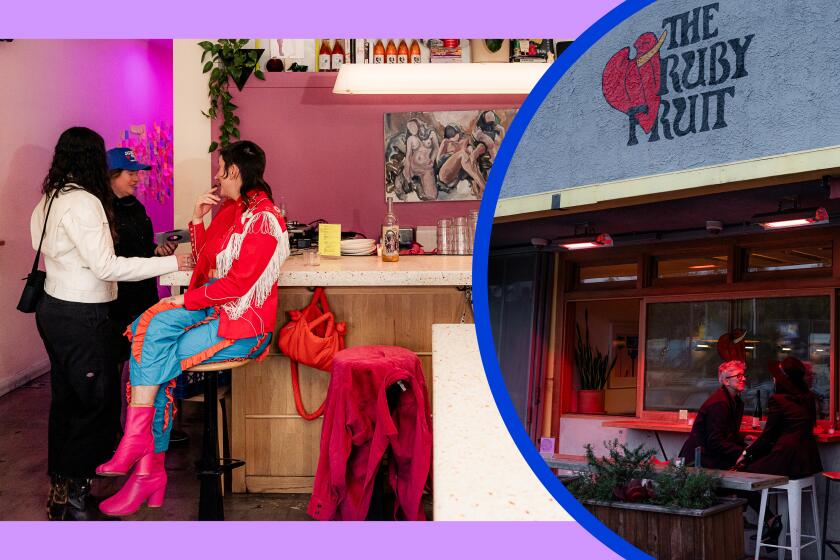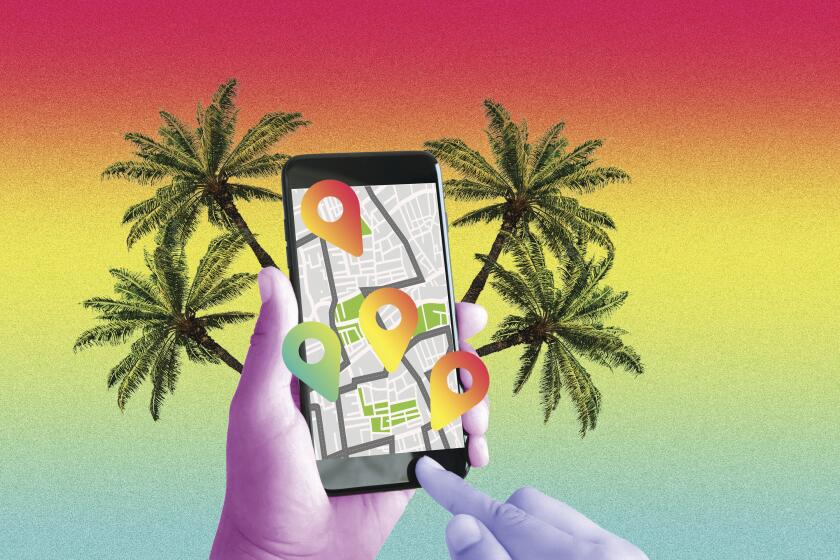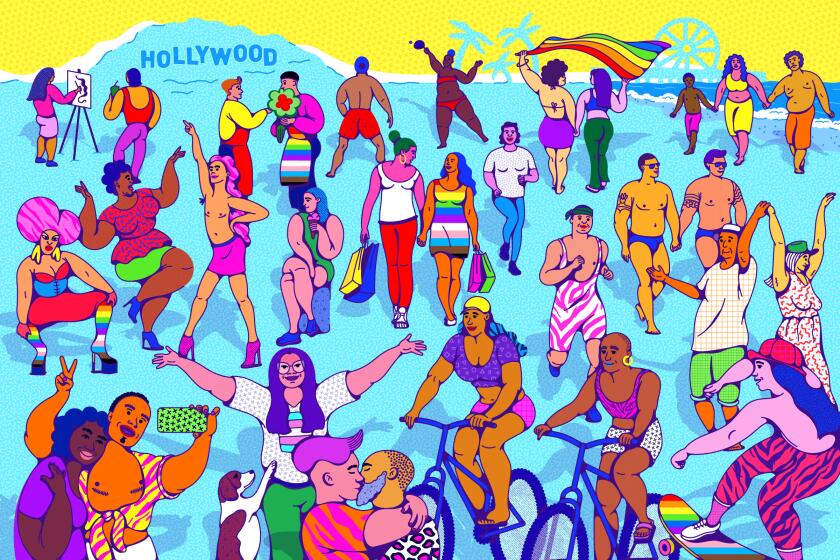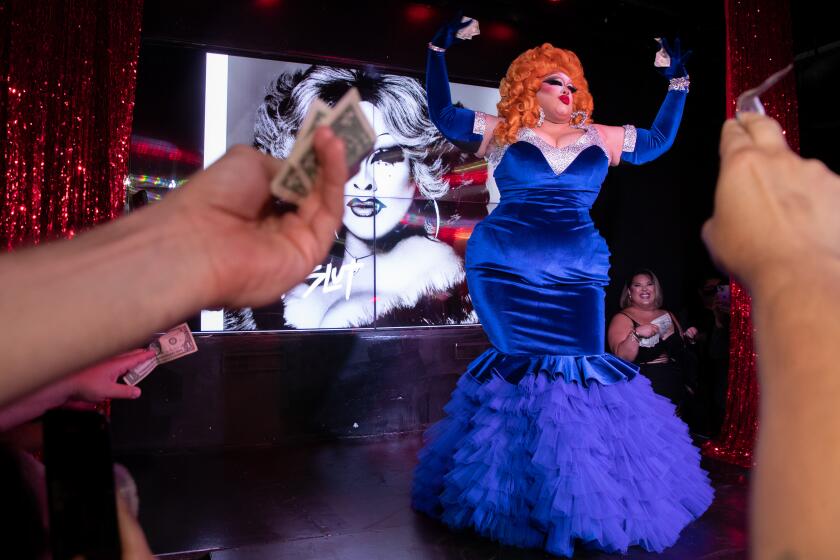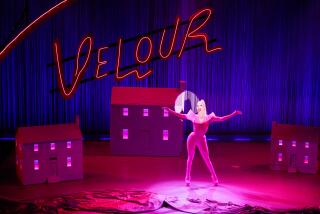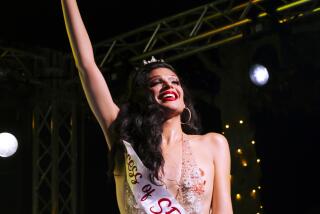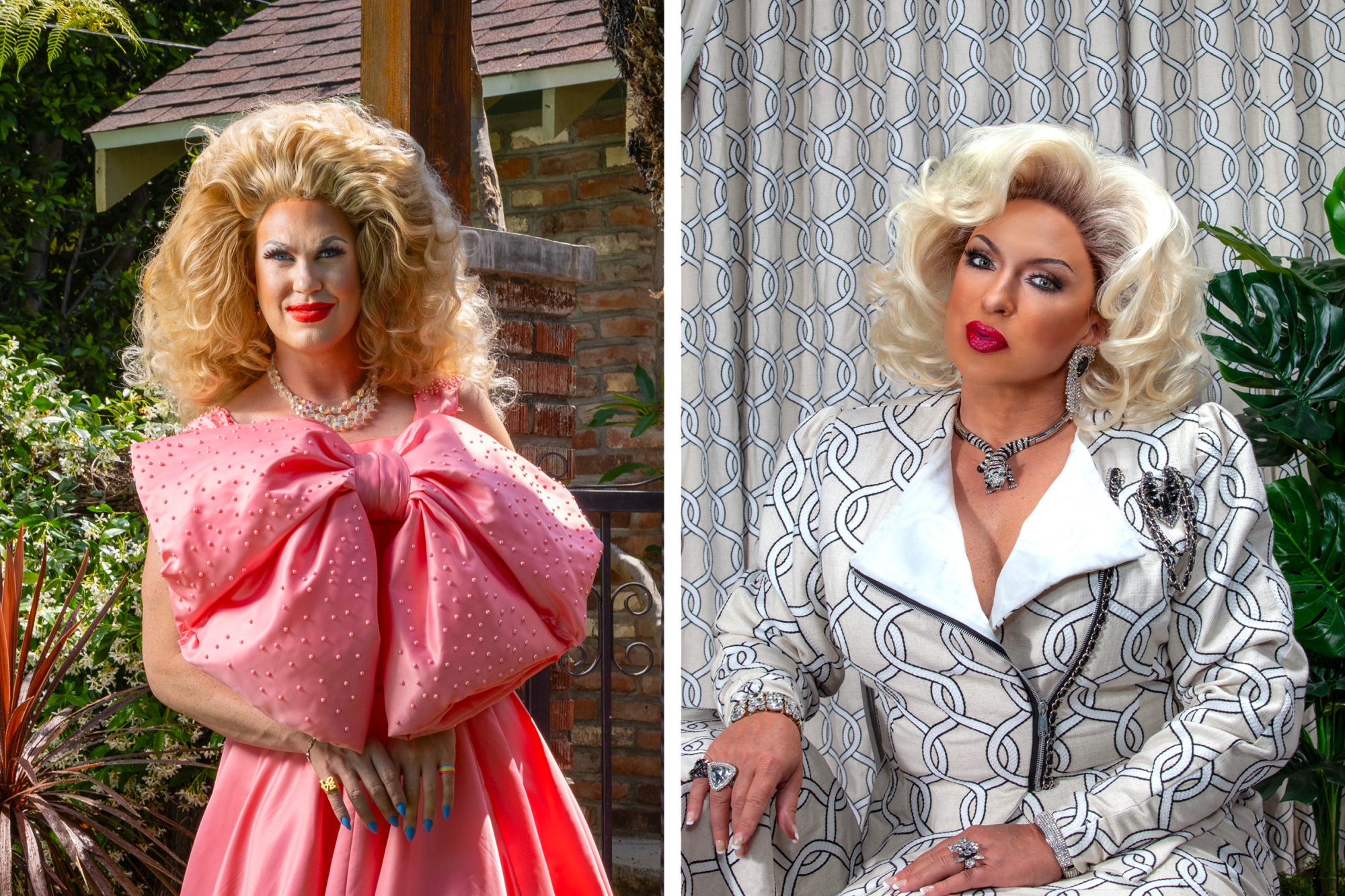
- Share via
It’s June and Pride Month is in full swing as LGBTQ+ communities around the world celebrate together as well as commemorate the Stonewall Uprising in New York City in 1969. Two prominent voices — the drag laureates of West Hollywood and San Francisco — are booked and busy. There are wigs to coif, dresses to steam and parties to attend.
On their busy schedules this month are a host of events: Pride kickoff parties and official parade appearances in SoCal and NorCal, a panel about drag and cinema at the Academy Museum of Motion Pictures in Los Angeles, and the raising of the Pride flag at City Hall in San Francisco, among many others.
Build your community over a glass of orange wine or a square of focaccia at local, queer-owned businesses around L.A.
The laureates — drag queen D’Arcy Drollinger from San Francisco and L.A. native Pickle, the one-name drag queen representing West Hollywood — sat down late last month to chat about their tenures, Drollinger on a video chat and Pickle in person over lunch in Hollywood.
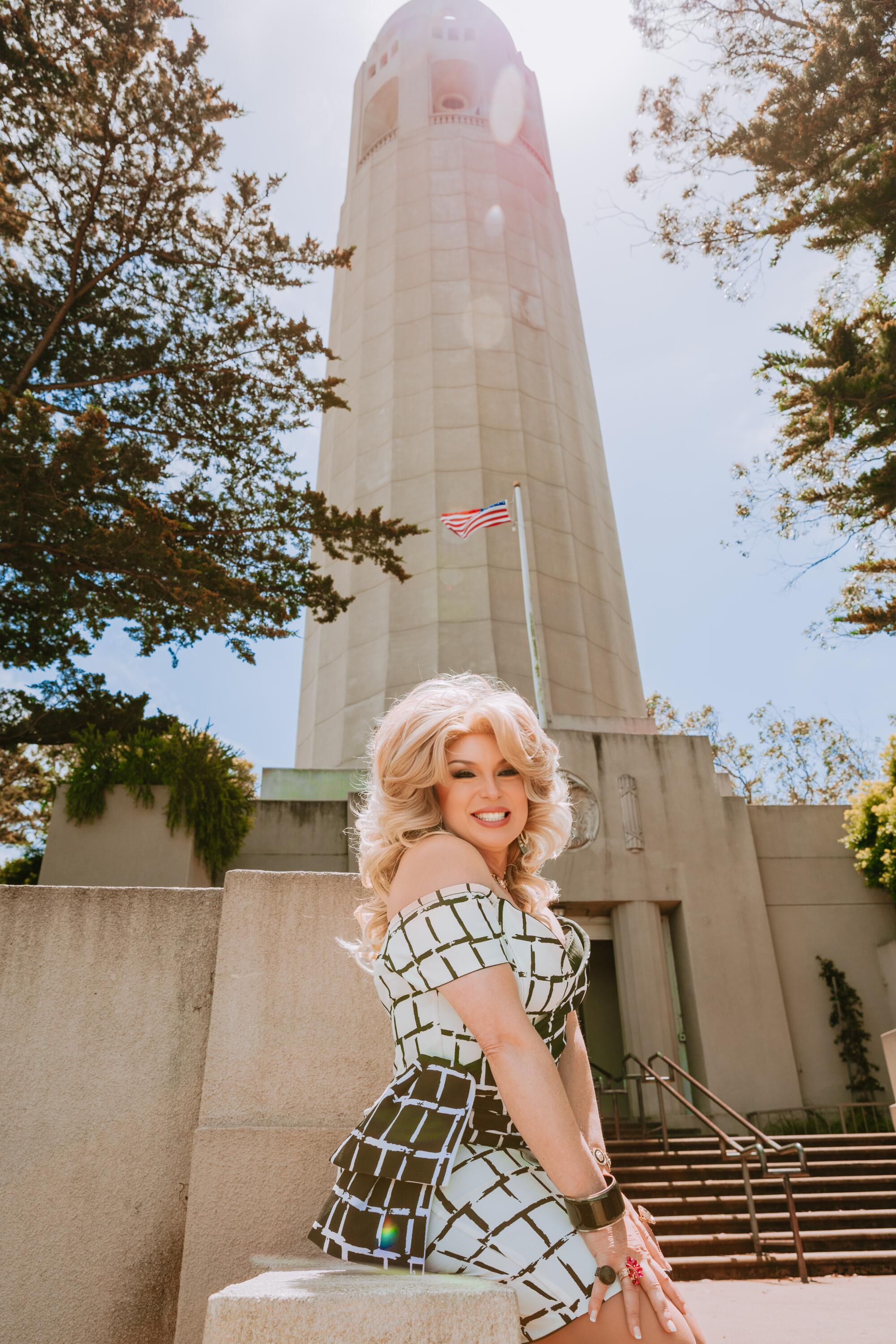
So what is a laureate? And what is a drag laureate specifically?
A laureate is a recipient of an honor or recognition for achievement in an art or science. The most widely known laureate program in the United States is in the field of poetry. The National Youth Poet Laureate Amanda Gorman rose to acclaim when she read her poem “The Hill We Climb” at President Biden’s inauguration in 2021.
So then, what exactly is a drag laureate? The answer for Pickle and Drollinger — they are the first two queens in the nation to hold this title — is that it’s a role that is still being defined. Their individual roles receive an annual stipend funded through West Hollywood Arts Council for Pickle and through the San Francisco Public Library for Drollinger. The role is meant for them to act as a spokesperson for local businesses and be an ambassador for their city. Also, during their tenure, they’re meant to highlight the LGBTQ+ community and elevate the art of drag.
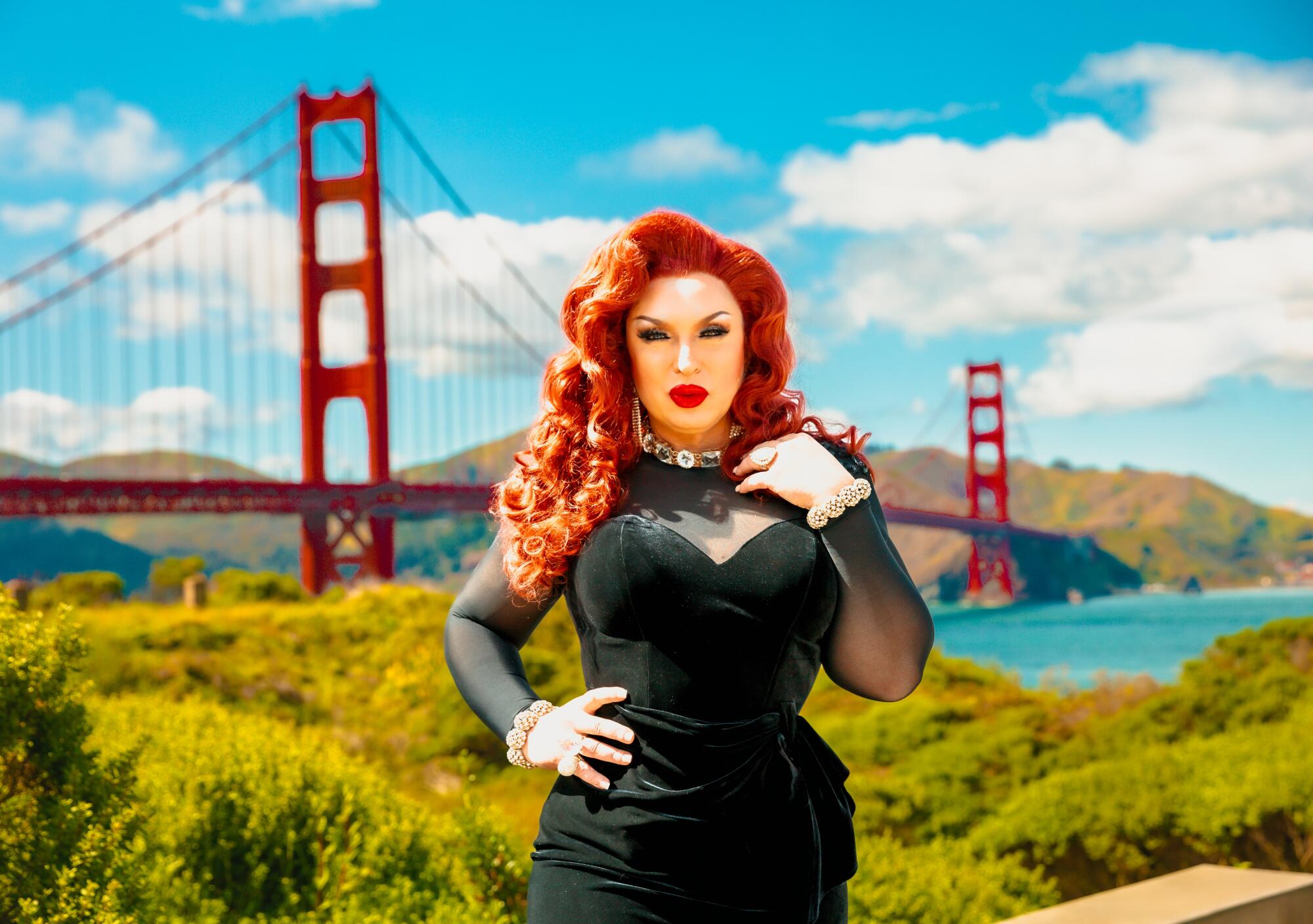
Why does having these roles in cities with large LGBTQ+ populations matter?
“The queer community continues to be the heartbeat of [this city],” says Drollinger, who thinks a position like hers shows a great commitment by San Francisco leaders to a group that has deep roots in the city and helped shape its identity. The queer communities in San Francisco and L.A. have been at the forefront of progressive change, with monumental protests at Compton’s Cafeteria in 1966 in San Francisco, Cooper Do-Nuts in downtown L.A. in 1959 and the Black Cat in Silver Lake in 1967.
From protests and parades to the homes of early gay rights activists, the Southland has played a key role.
Both laureate programs were spawned from COVID-era worries about the declining state of small business and ravaged city cores, as is playing out in San Francisco. All across the country, downtowns have largely sat empty, a product of people conditioned to staying home during the pandemic shutdown. Turning to drag queens and kings, talented performers who are good at drawing a crowd and creating a festive environment, seemed like an obvious way to get the LGBTQ community and its allies back out.
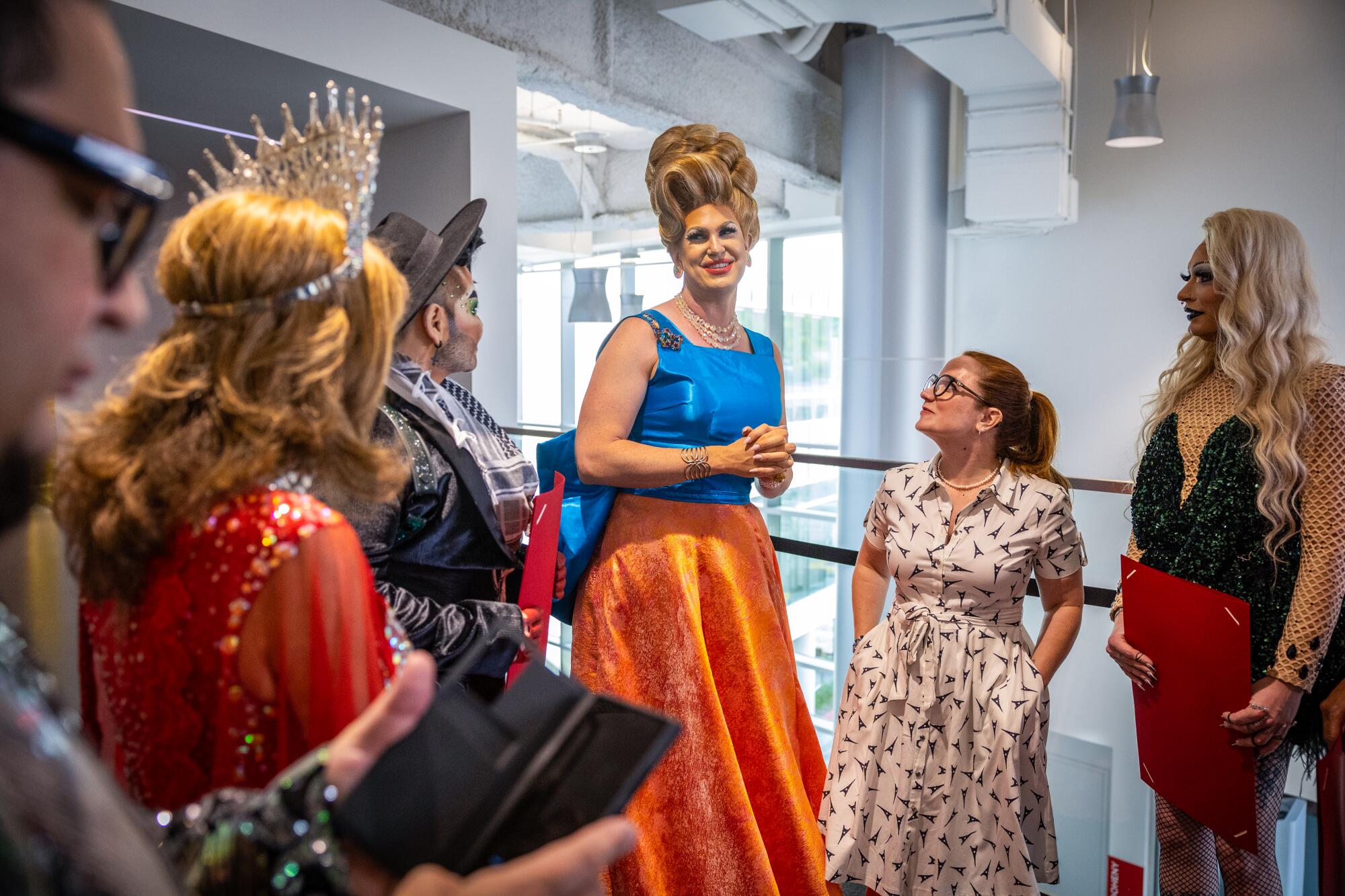
“The LGBTQ community has such a history with the city,” says West Hollywood Councilmember Lauren Meister, who helped draft the initial proposal for the Drag Laureate program in WeHo. “We wanted the drag laureate to be an ambassador to West Hollywood businesses but also promote art and culture. We wanted to do something that could bring some levity back to our city and keep things edgy.”
Positions like this, in two of America’s most liberal cities, in a time when drag queens are everywhere from TV to local bars, might not seem revolutionary. But around the country, the landscape can look a little different. This year alone, the American Civil Liberties Union is tracking 25 bills in state legislatures that are aiming to block children from drag performances, force venues that promote performances to register as adult businesses or ban drag altogether. And in California, drag performers are not immune from harassment by conservative groups.
2023 Pride guide for flourishing in Los Angeles: Where to go and who to know in L.A.’s LGBTQ+ community
Pickle, who leads the Los Angeles chapter of Drag Story Hour that hosts story-time readings for children at local libraries, was met with angry protests at a story hour in the city of San Fernando last fall. Although it was a distressing experience, she tries not to let it rattle her too much. She continues to host story hours around L.A. County and is working with San Fernando city officials to investigate the incident.

Who are these queens?
In July 2023, Pickle was selected by the West Hollywood Arts Council from a pool of applicants to be the city’s first drag laureate. In her official capacity so far, she has MC’d a Halloween Spectacular in support of the Bob Baker Marionette Theater, played host for an event celebrating the 39th anniversary of the city of West Hollywood, and just recently put together a drag pageant in honor of LGBTQ activist José Julio Sarria for Harvey Milk Day.
Pickle, whose name was inspired by drag icon Hedda Lettuce and her favorite In-N-Out order (cheeseburger, extra onions, no pickle), is excited about uplifting other drag performers and showcasing the talent that’s bubbling up all around Southern California. “Drag is so much more than the bars and clubs people are used to seeing it in,” says Pickle, who has been performing for about a decade. “It’s a legitimate art form that deserves its spotlight.”
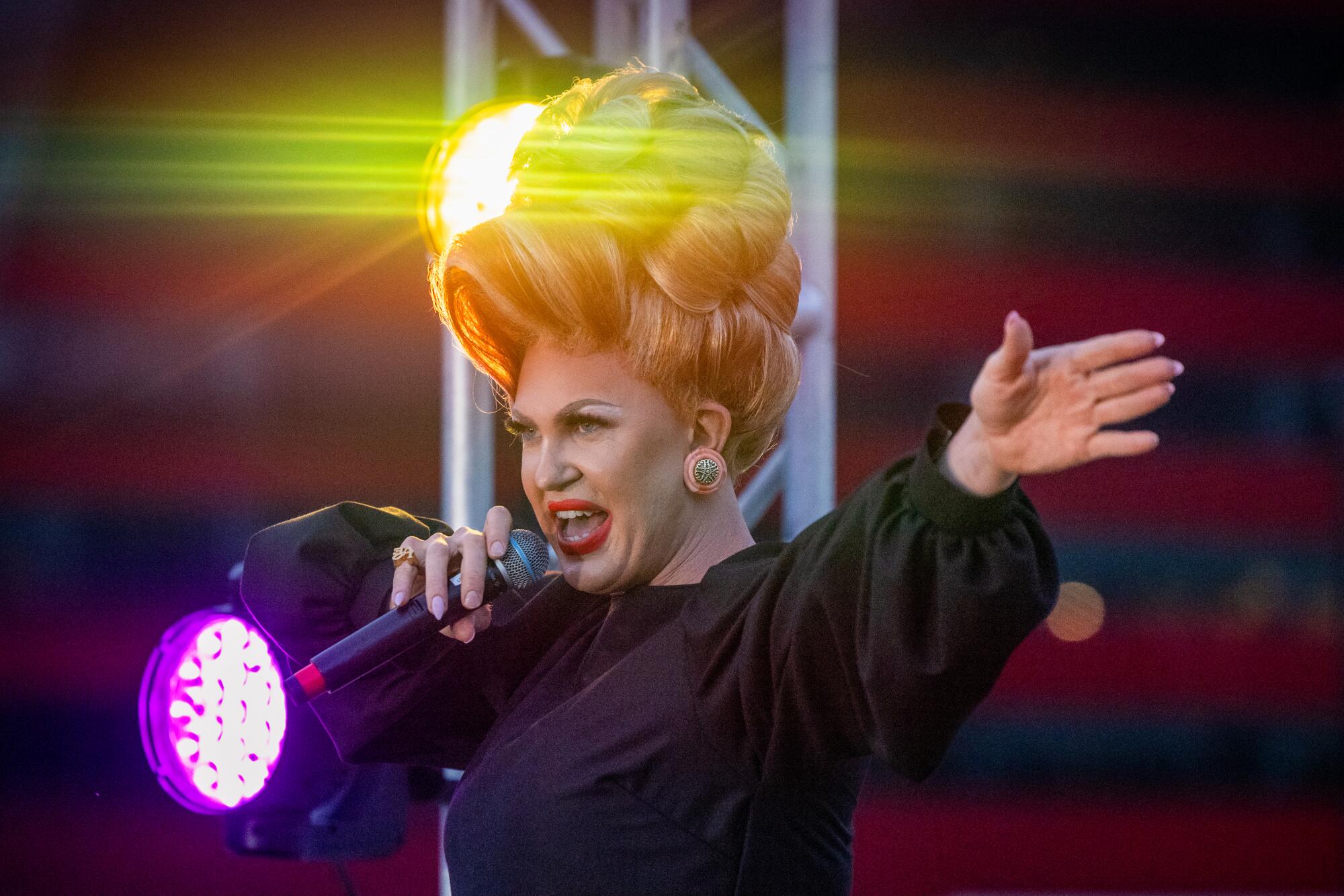
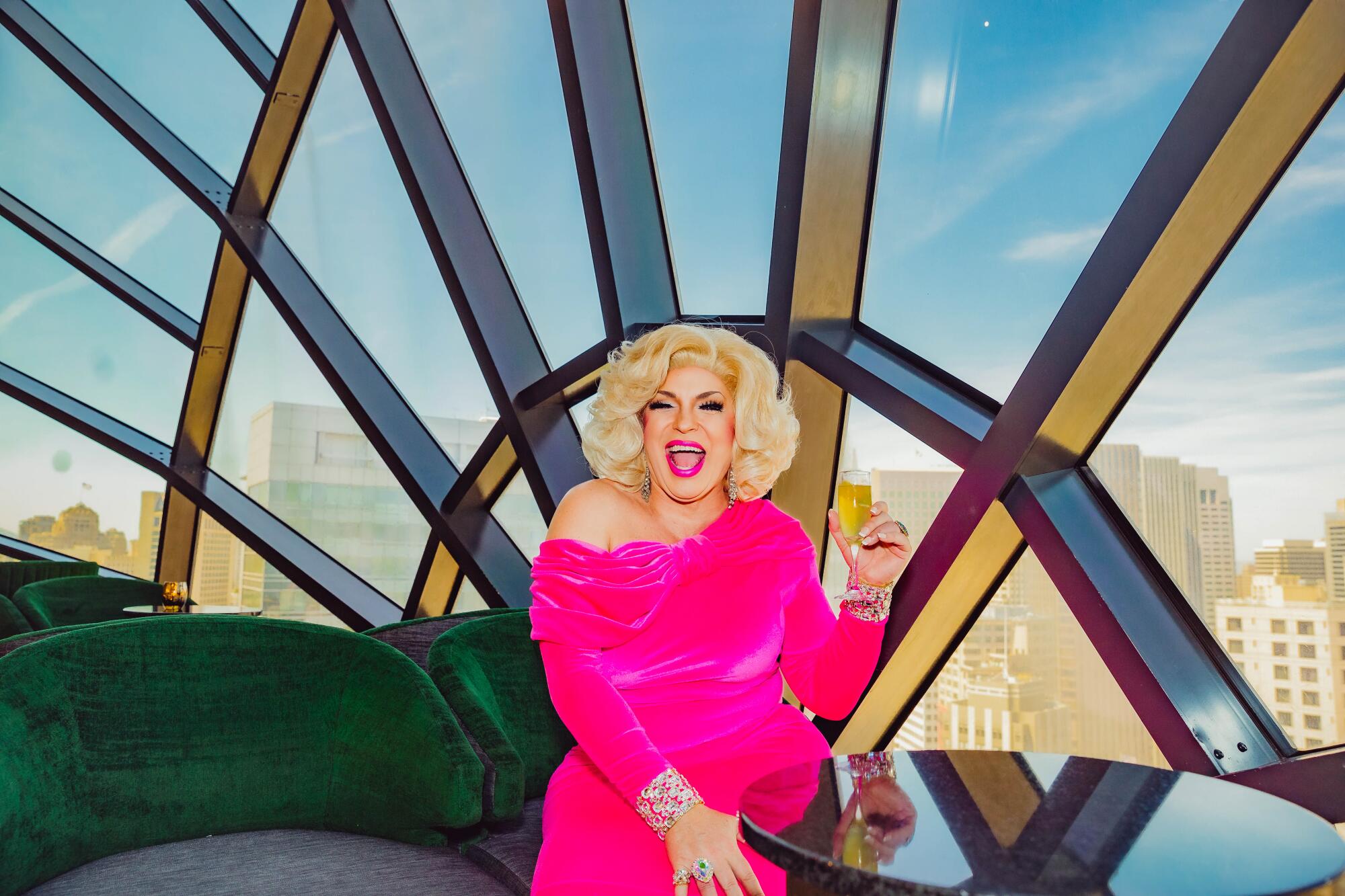
Drollinger, who was appointed in May 2023, dons a big blond bouffant wig, expressive eyes and pouty lips. The San Francisco native is a veteran drag performer, writer and actor who’s been performing since the ’90s. She’s also the owner of Oasis, one of the country’s largest drag cabarets. In her role as laureate, she has curated drag stages for the San Francisco Museum of Modern Art and the music festival Outside Lands, and has helped develop drag performances in conjunction with First Thursdays, an effort to promote the businesses in downtown San Francisco.
Drollinger has always tried to support other queer artists, mainly through her nonprofit Oasis Arts that provides mentorship, performance space and small stipends to queer artists of all genres. With the laureate role, she is excited to be able to spotlight her community even further.
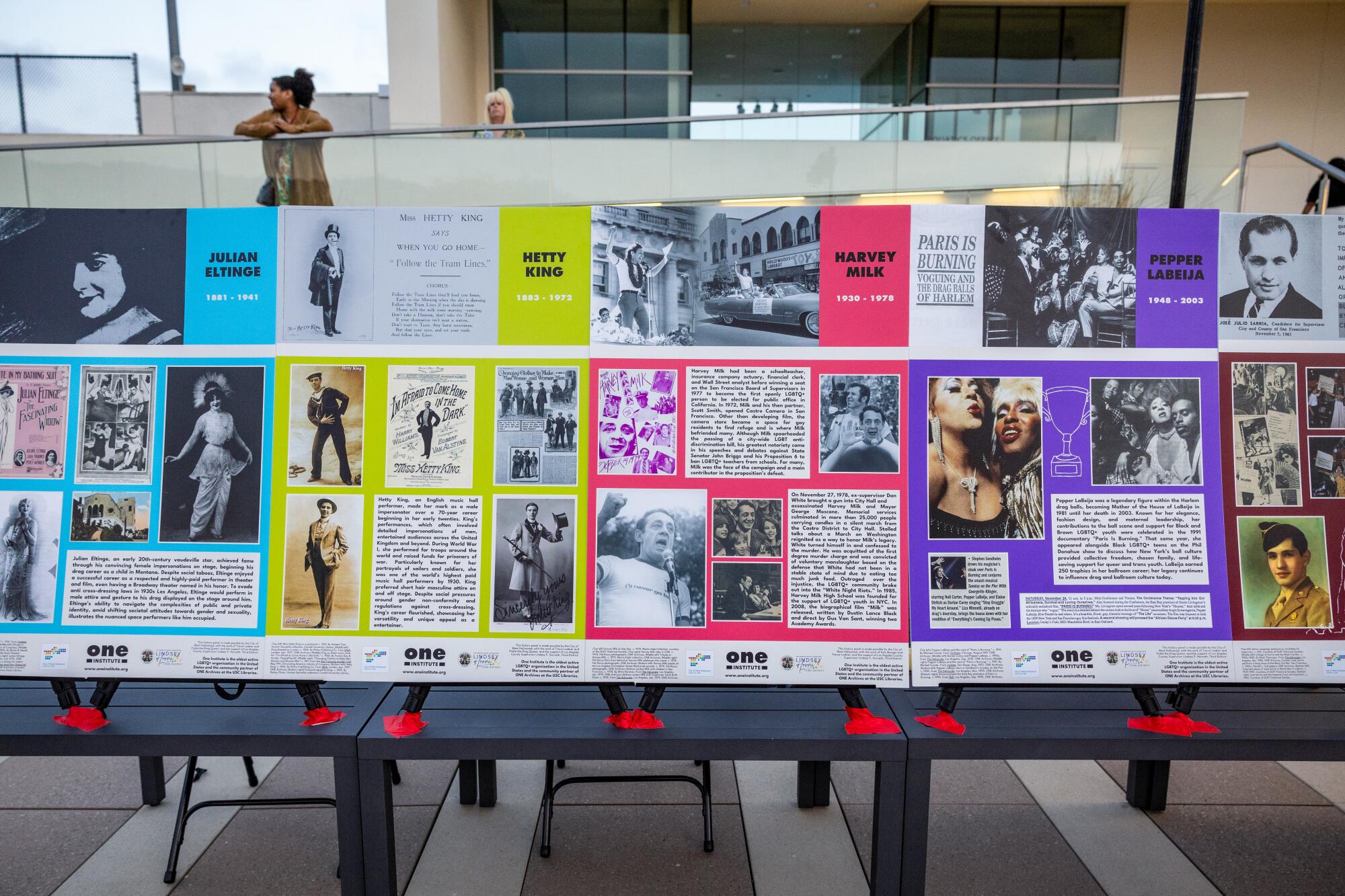
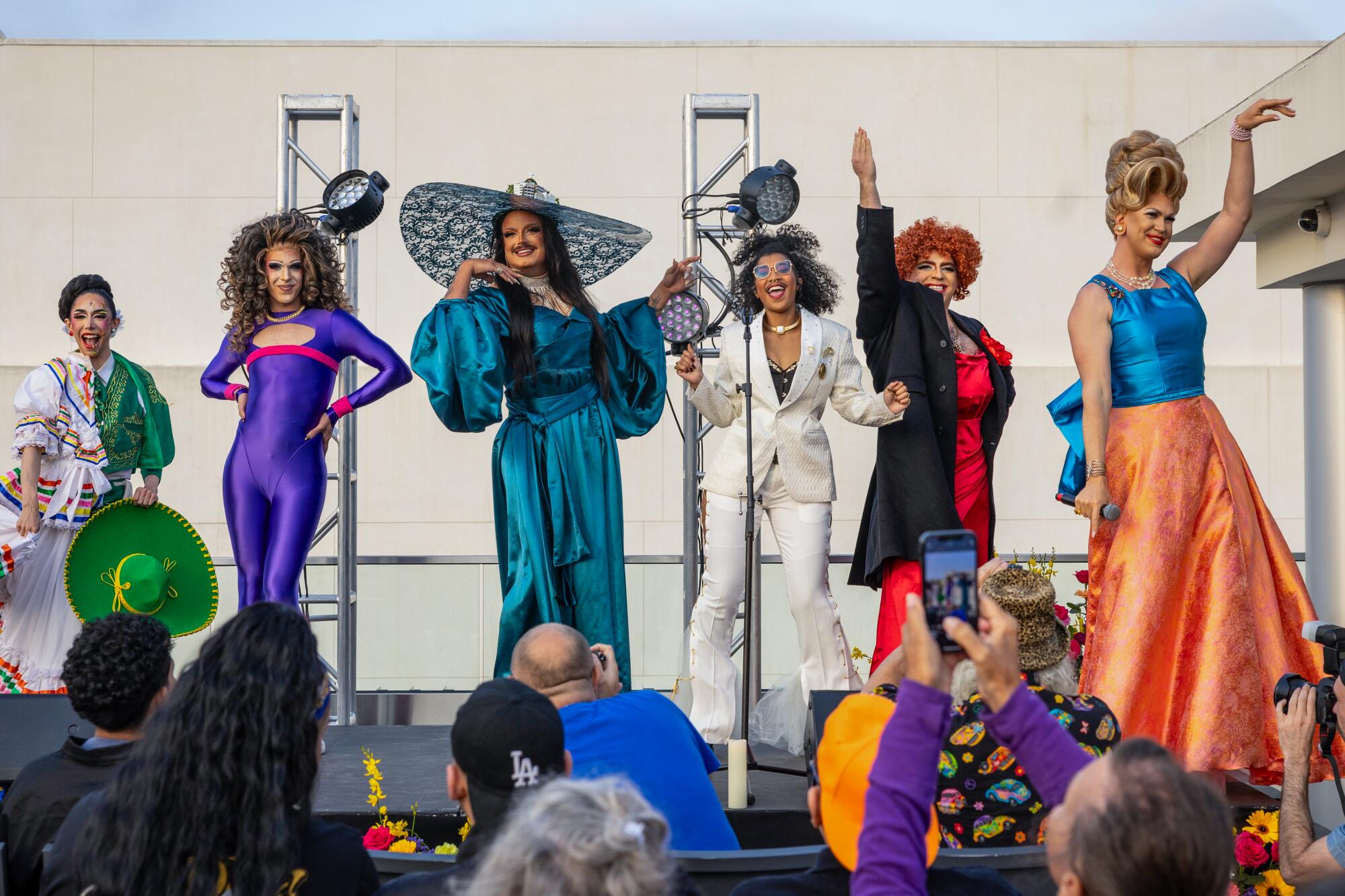
Is diversity and inclusion helping to shape the future of the drag community?
As with anyone who steps into the role of “first,” the question of who’s next as a laureate comes up regularly. Both drag queens say they are aware of the diversity of their communities and the need to bring representation to this new elevated position. But they are cognizant of the fact that while they were chosen by a selection committee from a diverse pool of individuals, they are white performers. Pickle and Drollinger say they are confident that diversity will be better reflected in the laureate appointments moving forward.
“I’m just one flavor,” says Pickle of the breadth of talent in the drag community. “I’m spending a lot of my time connecting other drag artists to resources.” One of her initiatives as a drag laureate has been to set up quarterly drag roundtables at Plummer Park Community Center to bring together drag performers of all backgrounds with resources that can help elevate their art.
According to Pickle, there are local arts grants of up to $6,500 specifically earmarked for trans and gender-diverse artists that most performers aren’t aware of. She feels artists and performers in the drag community would be strong candidates because they’re making art nobody else is making.
Despite an ongoing culture war, L.A.’s thriving drag scene is bursting with queens, kings, things and rebellious spirit.
She also has witnessed remarkable change. “We recently got a lot of the descriptions for these arts grants rewritten to specifically include drag performers,” she says. “It’s incredibly important to be able to see yourself mentioned in these grants to think, ‘Oh yeah, this is something I can utilize.’”
In the Bay Area, Drollinger says creating space for trans and BIPOC communities is paramount. She often hears that there should be more trans and BIPOC nights at certain clubs in NorCal. “And that is important,” she says. “But why not include everyone in everything? … Once we have a shift in consciousness, those who are considered outsiders become the insiders.”
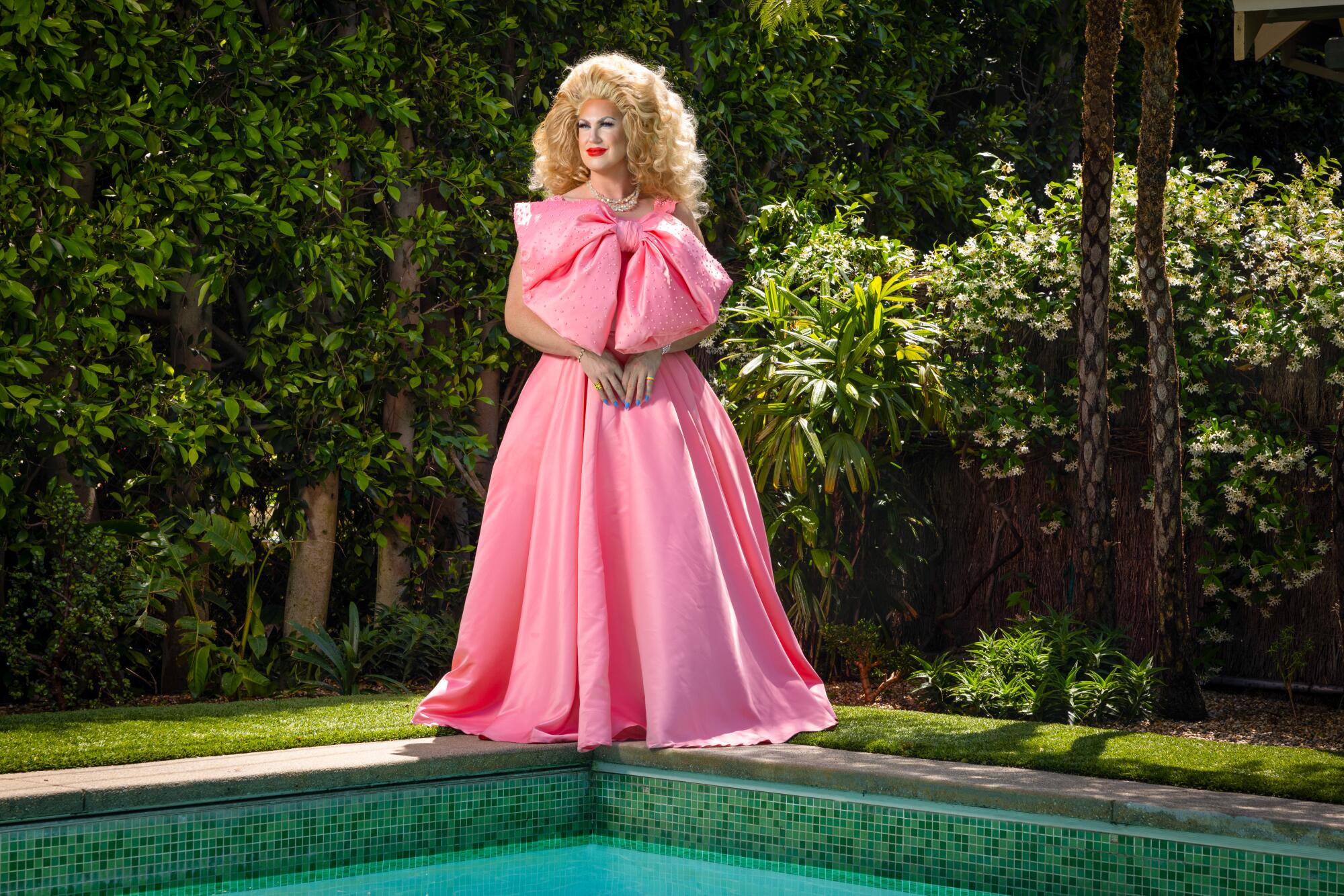
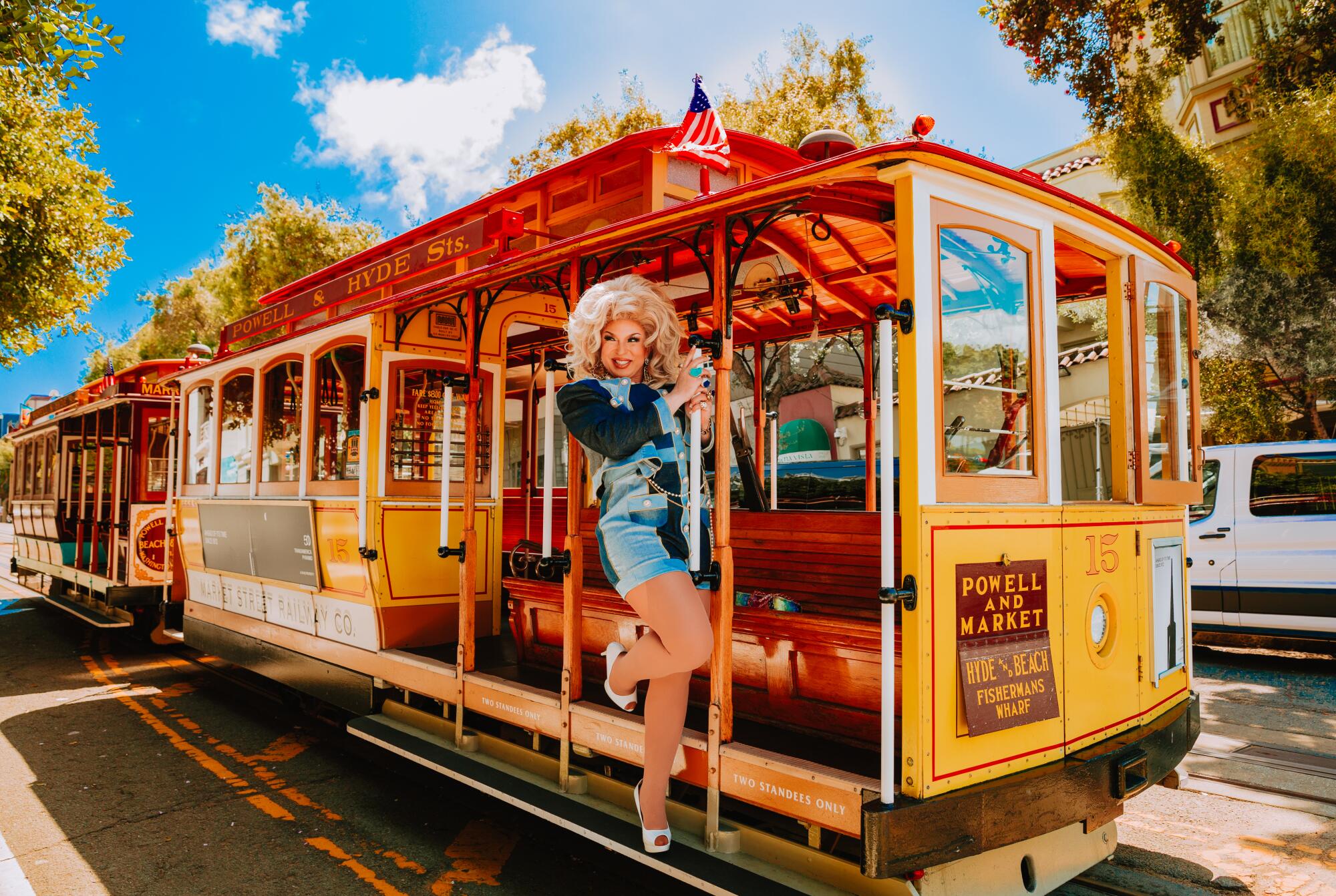
Who comes next?
The laureates still have time on their tenures: Pickle will end hers next summer; Drollinger’s tenure ends in November, but she’s discussing a six-month extension. However, they are starting to see the finish line and are thinking about what, or more important, who comes next. “The true measure of success for my time as laureate will be in the pool of applicants for the next round,” says Pickle. If she’s done her job well, she says the next laureate will be selected from a much larger number of applicants from all sections of the drag community.
For Drollinger, she hopes to leave behind an event or two that can be replicated by her successors if they choose to. “On my way out, I want to put in writing what I think this program is, to give it a little more shape,” she says. “But ultimately, I hope the drag laureate role can be whatever that individual laureate wants to make of it.”
More to Read
Sign up for The Wild
We’ll help you find the best places to hike, bike and run, as well as the perfect silent spots for meditation and yoga.
You may occasionally receive promotional content from the Los Angeles Times.
